Was it wind? How a bridge’s failure may shed light on fatal Boise Airport hangar collapse
Several hours before an unfinished building collapsed near the Boise Airport, killing three and critically injuring five others, Robert Hamilton pulled off to the side of the road and snapped a few pictures of the steel structure on his phone.
He wanted to capture the skeleton of what was to become a standalone hangar for private jets.
Hamilton, an associate professor of civil engineering at Boise State University, lives near the airport and passes the site along Wright Street every time he drives to work. He has a background in construction and structural engineering, and had been following the day-to-day progress of the building as he traveled to and from his Southwest Boise home.
“We were just talking about how to help buildings take loads,” Hamilton said, referring to a conversation he had with colleagues. “So I stopped to get some pictures while it was still under construction. I wanted to see the skeleton — the inside — before they put covering on the outside.”

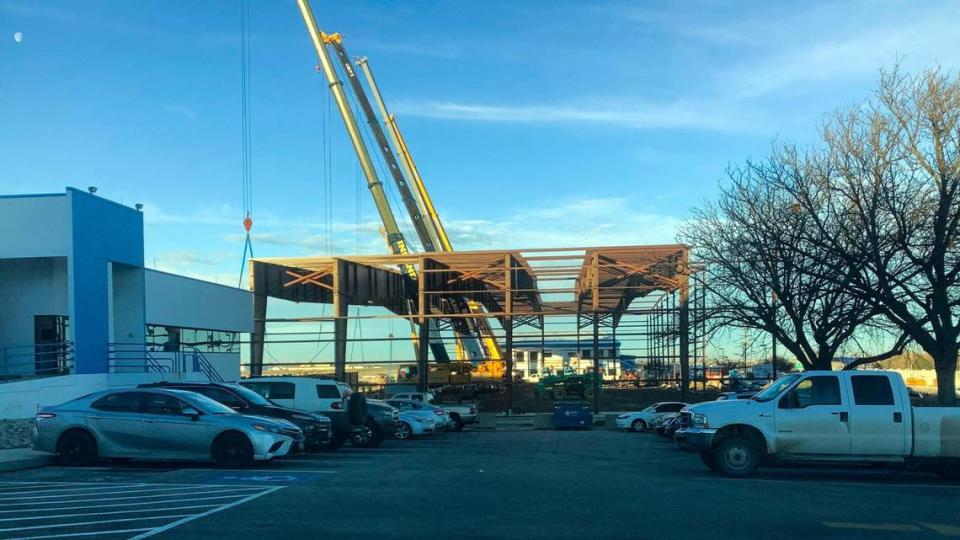
Now, it’s unclear when, or if, the hangar will be completed.
Hamilton visited the site Wednesday, where he observed four cranes seemingly working in tandem to hang large steel beams, otherwise known as girders. A few hours later, the entire frame collapsed in on itself, abruptly snapping the boom, or hydraulic arm, of one of the cranes trapped in the midst of it.
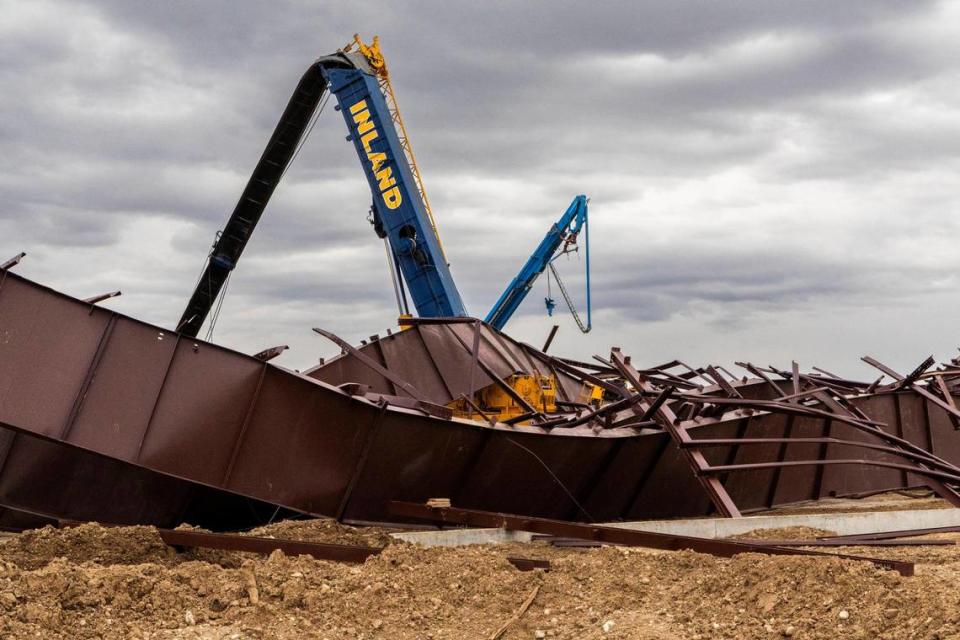
Inland Crane, the Boise company hired to help build the hangar, said three of its four mobile cranes Hamilton saw that morning were removed by the afternoon at the direction of another contractor. Work to erect the frame was nearly finished, and they were no longer needed. Inland said the lone remaining crane was placing an end truss when the accident occurred around 5 p.m.
A truss is a framework of beams often used to support roofs and bridges.
Though officials are still investigating the cause of the collapse, Inland Crane said in a statement Thursday that it believes neither crane operators nor the crane itself were to blame for the hangar’s catastrophic structural failure.
Still, the tragedy is mystifying. Why did the frame collapse, if not because of the crane? Did the 20-mph gust that sprung up in the afternoon topple it? Was the structure simply not stable enough?
We interviewed a handful of industry experts who, without inside knowledge of the project, offered insights about what might have gone wrong.
Pre-engineered building pieces assembled on site
“I was very surprised it came down,” Hamilton said by phone. “Because any firm that constructs buildings like this understands you have to place a lot of temporary support until the entire system is put together. Until the skin is on, that building is not really behaving the way it’s designed to behave. Part of what the skin does, the siding, the roof, etc., is help prevent it from moving.”
Construction began on the hanger for the Jackson Jet Center, located on Boise Airport property, sometime late last year. City filings show a permit for the foundation was issued in October. It was to be one story tall.
The hangar was pre-engineered, meaning it was made from steel parts like pillars and beams that were shipped to the site from a manufacturer. Pre-engineered buildings grew in popularity after World War II and have since become common in industrial and warehouse construction because of their efficiency. They’re assembled on-site by crews using high-strength bolts, welds or a combination of both, Ahmed Ibrahim, an associate professor of civil engineering at the University of Idaho in Moscow, told the Idaho Statesman.
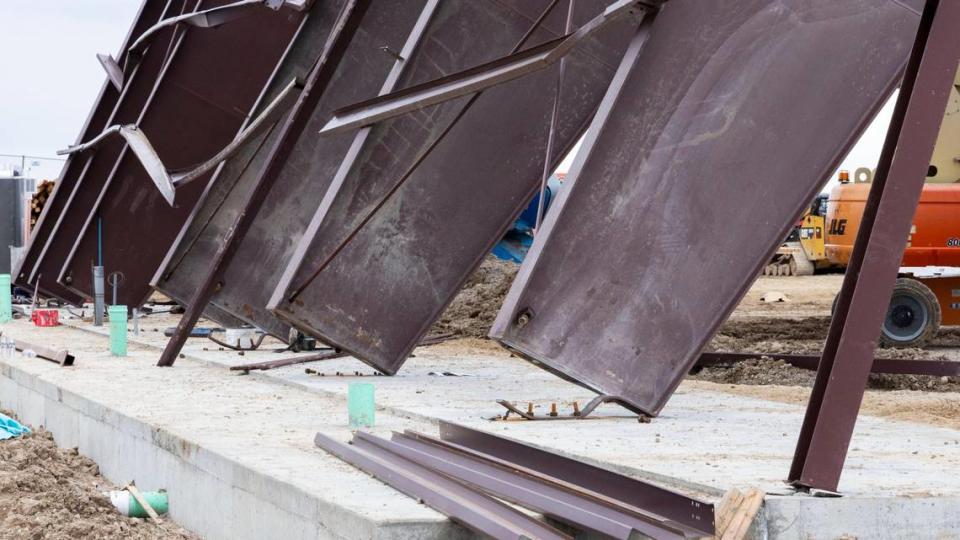
He said the method is ideal for structures such as aircraft hangars.
Based on photos, he added, the frame looks to be what engineers call a moment frame, a design without diagonal braces. But without being involved in the project, Ibrahim could only guess why it failed.
He said the sudden twisting of the main girders, the large steel beams that were to provide the building’s primary support, show that the materials buckled, a risk when any long structural component, like a truss, is loaded onto a frame. Steel can only absorb so much compression before it starts to fail, and buckling is characterized by high compressive stress. Often, the failure is instantaneous.
Why this occurred at the unfinished hangar in Boise puzzles him.
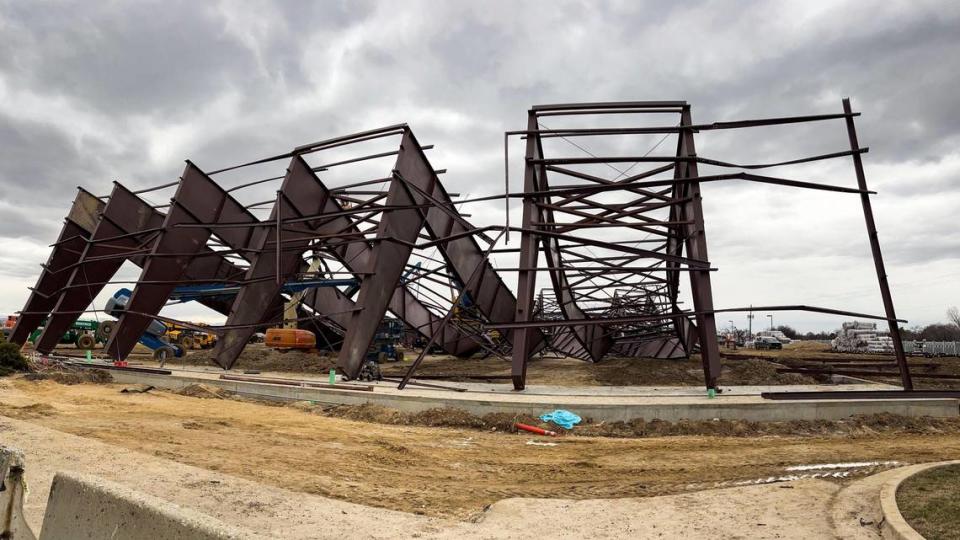
“We design those sections to be able to withstand that kind of buckling, and other forces and stressors,” said Ibrahim, who teaches graduate-level courses in steel design and the dynamics of structures. “It might be something related to temporary bracing, connection detailing or crane maneuvering, but again, that’s just a guess. I’m also not sure if there was a huge wind that night in Boise. We need an in-depth investigation to see what caused the failure.”
Wind caused 1940 Tacoma Narrows Bridge collapse
Ibrahim and Yang Lu, an associate professor of civil engineering at Boise State and an expert in forensic analysis of failed structures, both referenced the 1940 collapse of the Tacoma Narrows Bridge in Washington state. There, a three-member panel of top-ranking engineers assembled by the Federal Works Agency concluded a year after that the collapse was caused by a “random action of turbulent wind,” drawing the intrigue of engineers around the world.
The bridge failed four months after opening to traffic, but was plagued by windy conditions from the start, earning the nickname Galloping Gertie, The News Tribune reported.
One of three key findings in the report was that the solid plate girder and deck acted as an airfoil, creating drag and lift, according to the Washington State Department of Transportation. Drag and lift are forces that act on airfoil-shaped structures, like wings, sails and propeller blades.
Lu said wind “could have been a triggering factor” in the Boise hangar collapse. He estimates it could be months before the investigation wraps up.
Data from the National Weather Service in Boise shows that from around 4:30 p.m. to 5:30 p.m. on Wednesday, the area near the airport sustained winds of 14-17 mph, the Statesman previously reported. At 4:50 p.m., about 10 minutes before emergency services were called to the site, a gust of 20 mph was recorded.
Guidelines issued by the Occupational Safety and Health Administration say construction sites should exercise caution, and consider halting lifting operations, when wind speeds reach 20 mph or more.
“I do know that the beams they had on that thing were very deep, meaning there was a lot of surface area if the wind did pick up,” Hamilton said. “If you have a big enough area, it starts acting like a sail. That’s one thing we always try to take into account. They’ve had steel up in the air for a couple of weeks and haven’t had problems. So I would look at whether something changed yesterday that hadn’t happened before.”
He noted that cranes are designed to pick things up and put them straight down, and any strong winds would push whatever it’s holding sideways.
Cranes have wind ratings
Richard Nielsen, an associate professor of structural engineering at the U of I, said certain pieces of construction equipment, like cranes, have wind ratings, indicating whether they can safely hoist materials when wind speeds reach a certain number.
Gusts can also push the structure itself around and affect its stability.
“Construction will often stop when the winds are too high,” Nielsen said by phone. “It can make it more difficult to maintain the stability (of the structure) and to get things lined up.”
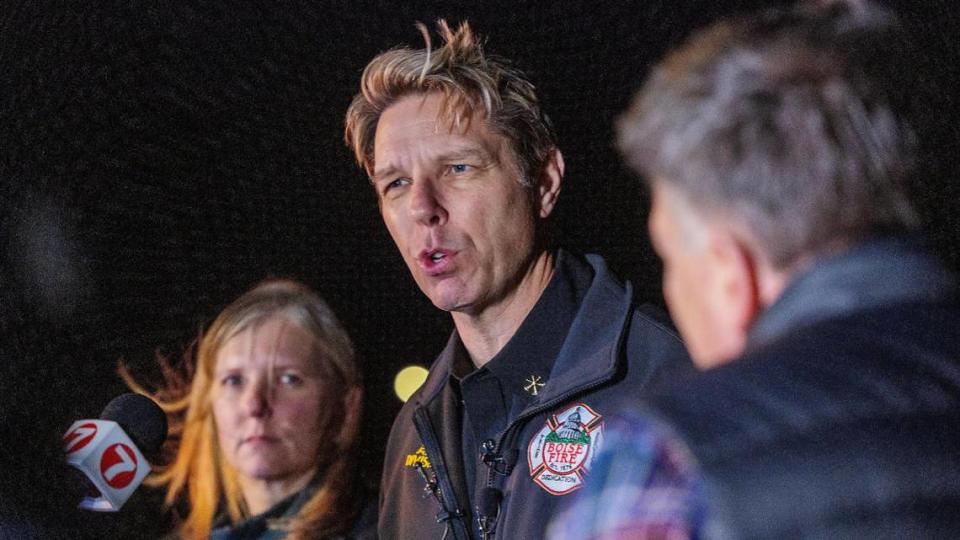
Lucas Green, an ironworker from Mountain Home who has worked on Boise construction sites for decades, told the Statesman that one of his biggest concerns as news spread of the collapse was that wind may have played a role. He said a buddy of his who directs cranes at a construction site on Micron’s campus in Southeast Boise made the call to halt operations at noon Wednesday because of the wind.
He added that he has worked with Inland Crane in the past, and “those guys are the most respected crane operators I’ve ever been around, and their safety standards are amazing.”
“It’s a fluke, to me,” he said by phone.
Green worried that, from looking at photos of the wreckage, he couldn’t see any guy wires, which are tensioned cables that add stability to freestanding structures.
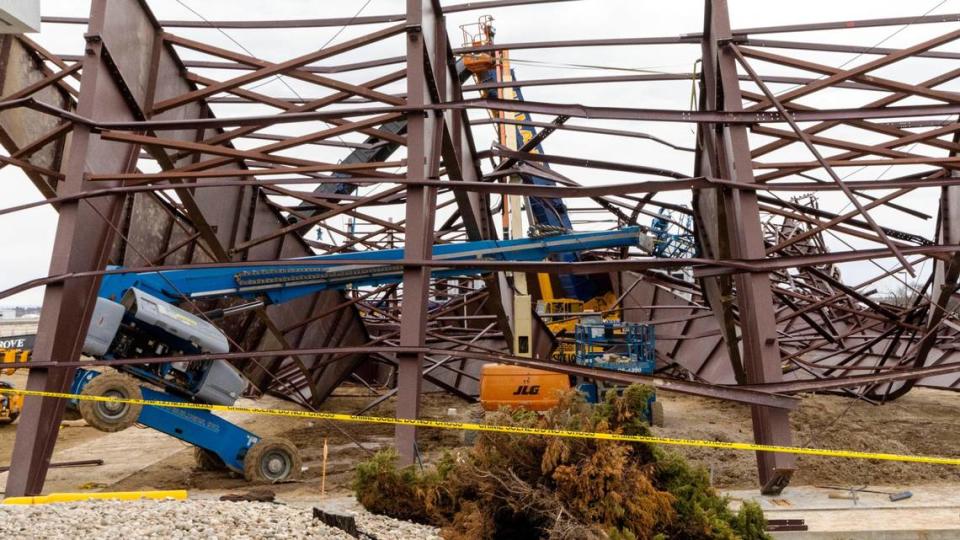
On Friday morning, the Ada County Coroner’s Office released the names of the three people killed during the building’s collapse. Boise Fire has said it won’t provide updates on the injured people.
“I could just imagine these people’s families right now and what they’re going through,” said Green, whose brother died years ago in an explosion at a hazardous waste site about 40 miles south of Boise. “It’s just — it’s horrible. It should not have happened.”
Breaking news reporter Sally Krutzig contributed.
Coroner identifies three Boise-area men who died in hangar collapse at airport
3 people died at Boise Airport’s Jackson Jet Center. What is that center? Who owns it?
Safety record of contractor for Boise collapsed hangar surfaces as OSHA investigates

